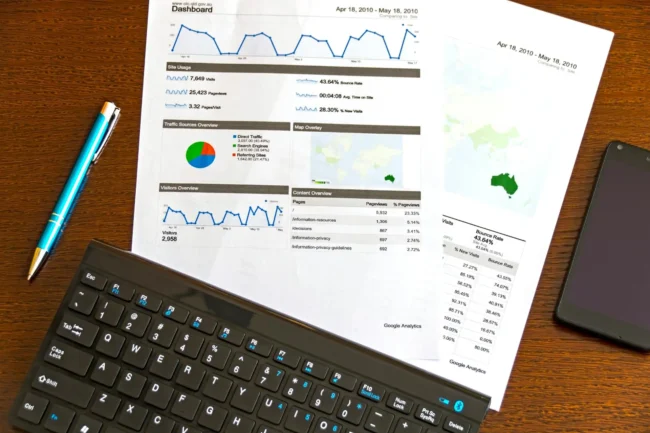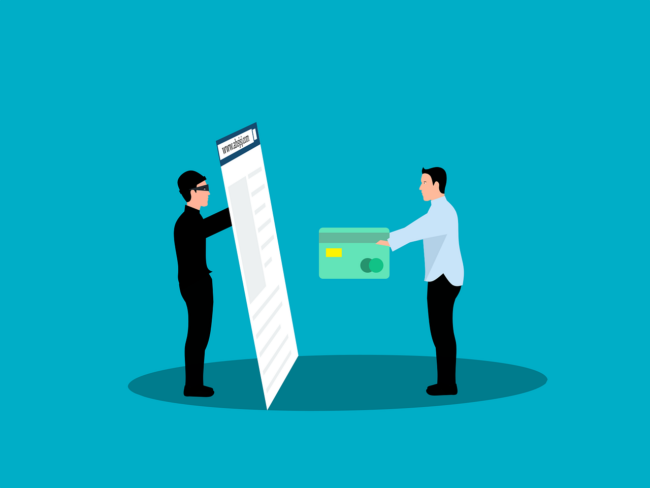Our team at SaneChoice and industry experts craft our articles to help you gain a deeper understanding of technology.
Avoiding Google Penalties: Safeguarding Your Small Business

Having an online presence is crucial for small businesses to thrive. However, with search engines like Google’s ever-evolving algorithms and guidelines, ensuring your website adheres to best practices is paramount.
Google’s mission is to deliver users the most relevant and high-quality search results. It actively penalises websites that fail to comply with its Webmaster Guidelines. This article looks into the intricacies of Google penalties, their potential impact on small businesses, and practical strategies to protect your online endeavours.
Understanding Google Penalties
A Google penalty is a repercussion imposed on websites that violate the search engine’s guidelines. It results in a significant drop in rankings or, in severe cases, complete removal from search results. These penalties can be broadly categorised into two types: algorithmic updates and manual actions.
Algorithmic Updates
Google regularly releases algorithmic updates to enhance the quality of its search results. These updates are designed to identify and penalise websites that employ black hat SEO techniques or fail to provide a seamless user experience.
Google’s algorithm updates primarily enhance the user experience by providing the most relevant and quality content in response to search queries. Whenever you type a question or phrase into Google, the algorithm sifts through billions of web pages to present you with what it believes is the most accurate and helpful information.
Google’s algorithm assesses various factors related to web pages, such as the relevance of their content to the search query, the usability of the pages, the quality of the information provided, and the number of other reputable sites that link to them. Updates to the algorithm can introduce new ranking factors or adjust the importance of existing ones to reward high-quality content and diminish the visibility of lower-quality content.
Over the years, several major Google algorithm updates have significantly changed the search landscape. Examples include:
- Panda (2011): Aimed to reduce the prevalence of low-quality, thin content in search results and reward unique, valuable content.
- Penguin (2012): Focused on penalising sites engaging in manipulative link schemes and keyword stuffing.
- Hummingbird (2013): Enhanced Google’s ability to understand the context of queries, making it more capable of handling conversational speech and complex questions.
- Mobilegeddon (2015): Gave priority to mobile-friendly websites in Google’s mobile search results.
- BERT (2019): This was one of the most significant leaps forward in the search history by using natural language processing better to understand the context of words in search queries.
Manual Actions
Google Manual Actions are essentially penalties manually imposed by Google’s webspam team on websites that violate the search engine’s Webmaster Guidelines. These guidelines are a set of best practices intended to discourage manipulative or deceptive behaviours and ensure a safe and useful search experience for users.
The primary purpose of Manual Actions is to protect the integrity of search results by penalising unfair or dishonest tactics, such as spammy backlinks, cloaking, or hidden text. When a site is flagged for a manual action, a human reviewer at Google has determined that parts of the site, or the site as a whole, are not compliant with Google’s guidelines.
Historically, Google has been relatively transparent about significant Manual Actions. Two notable Google interventions are listed below:
- Interflora (2013): Google penalised the UK flower delivery company for using paid link schemes to boost PageRank. This resulted in a significant, albeit temporary, drop in search visibility just before a significant business period, Valentine’s Day.
- Rap Genius (2013): The lyrics site was penalised for manipulative link schemes. Google’s action against Rap Genius significantly reduced search traffic until the issues were resolved.
Common Reasons for Google Penalties
Google’s relentless pursuit of high-quality search results has led to a crackdown on various black hat SEO practices and website flaws. Some of the most common reasons for Google penalties include:
Low-Quality Backlinks
Low-quality backlinks come from spammy, untrustworthy, or irrelevant websites. Search engine algorithms typically disregard or penalise these links because they do not contribute to a user’s understanding or experience of a topic. Instead, they are often used in attempts to manipulate search engine rankings. Low-quality backlinks generally have characteristics such as:
- Spammy or Non-Relevant Domains: Links from sites that have nothing to do with your website’s content or those recognised as spam can harm your SEO efforts.
- Over-Optimized Anchor Text: If the anchor text is aggressively stuffed with keywords, it can be seen as manipulative rather than informative.
- High Volume of Links from Few Domains: A natural backlink profile comprises links from various domains. A high number of links from a small number of sites can look suspicious.
- Links from Penalised Sites: If Google has penalised the linking website for violating guidelines, any link from that site could be considered low quality.
- Paid Links: Buying links is against Google’s Webmaster Guidelines, and thus, any paid link can be considered a low-quality backlink.
Keyword Stuffing
Keyword stuffing is the overuse of keywords within web page content. This refers to loading a webpage with keywords or numbers to manipulate a site’s ranking in search results. Often, these keywords appear in a list or group or out of context in a way that doesn’t feel natural or meaningful for the reader.
To avoid the pitfalls of keyword stuffing and maintain a healthy SEO strategy, website owners need to keep to some general areas:
- Focus on Quality Content: Write informative and valuable content for your audience. The keywords should naturally flow within the content’s context.
- Use Synonyms and Variations: Utilise synonyms and long-tail keyword variations to make your content more natural while maintaining its relevance to the target topic.
- Keyword Density: While there’s no keyword density to stick to, a general rule is ensuring that your content reads naturally to a human audience. If a sentence feels forced or awkward, it’s a sign to reduce keyword usage.
- Use Tools Wisely: SEO tools can help identify the right keywords to target, but use them to guide your content creation rather than dictate it.
- Regularly Update Content: Keep your content fresh and up-to-date. This helps with SEO and ensures that your site remains valuable and relevant to your audience.
Technical Issues
SEO technical issues are problems that arise from a website’s infrastructure and can affect a search engine’s ability to crawl, index, and rank the site effectively. These issues can be diverse and range from simple to complex. They usually require a thorough website audit to identify and address. Common technical issues include:
- Crawl Errors: Occur when search engine bots cannot access certain pages on your site.
- Broken Links: Broken links lead to non-existent pages, negatively impacting user experience and crawl efficiency.
- Duplicate Content: When multiple pages on your site have the same or similar content, search engines need to know which page to prioritise.
- Site Speed: Slow loading times frustrate users and discourage search engines from ranking your site favourably.
- Mobile-Friendliness: With the rise of mobile browsing, a site that isn’t optimised for mobile devices can suffer in rankings.
- Improper Use of Redirects: Incorrectly implemented redirects can make content inaccessible to users and search engines.
- XML Sitemap Issues: An XML sitemap helps search engines understand the structure of your site. Errors here can lead to poor site indexing.
- Robots.txt File Misconfigurations: This file tells search engine crawlers which pages to crawl and which to ignore. Misconfigurations can block important pages or allow unimportant pages to be indexed.
Duplicate Content
Duplicate content is a term that often surfaces in discussions about SEO best practices. It refers to substantive blocks of content within or across domains that completely match other content or are appreciably similar. This can be problematic for webmasters and content creators because it can hurt SEO. Duplicate content can appear in many forms, such as:
- Identical Pages: When the same content is presented on multiple pages within your website or across different websites.
- Printer-Friendly Versions: Pages created for printing that contain the same content as the original page.
- HTTP and HTTPS: Both secure (HTTPS) and non-secure (HTTP) versions of a site that display the same content.
- WWW and Non-WWW Pages: Similar content is accessible through “www.example.com” and “example.com” without proper redirection.
Thin or Spammy Content
In terms of search engines, content is king. But not all content is created equal. Thin and spammy content are two issues that can fail to engage readers and damage your website’s search engine rankings.
Thin content refers to web pages offering users little to no value. These pages often contain very little text, which may be of poor quality or very superficial. Examples include automatically generated content, pages with little more than affiliate links, or content scraped from other sites.
Spammy content includes pages that attempt to deceive both users and search engines. This might involve stuffing pages with irrelevant keywords, hiding text to manipulate rankings, or producing content full of ads and offering no real information or utility.
Cloaking and Sneaky Redirects
Cloaking involves presenting content different from what search engines show users, while sneaky redirects manipulate users into visiting unintended destinations. Google strictly prohibits these deceptive practices, which can result in severe penalties.
Identifying a Google Penalty
Recognising that your website has been penalised by Google is the first step towards rectifying the issue. While a significant drop in organic traffic can be an indicator, it’s crucial to distinguish between a penalty and other factors that may impact your rankings. Here are some ways to identify a Google penalty:
- Google Search Console: If your website has received a manual action penalty, you will receive a notification in your Google Search Console account. This notification will provide details about the specific violation and guidance on resolving the issue.
- Site Search: Performing a site search on Google (e.g.,
site:yourwebsite.com) can help you determine if your website has been removed from the search engine’s index, which could signify a severe penalty. - Industry Discussions: Monitoring industry discussions, forums, and online communities can provide valuable insights into recent algorithm updates and their potential impact on your website’s rankings.
Recovering from a Google Penalty
Once you have identified a Google penalty, taking prompt action is crucial to regaining your search rankings and organic traffic. The recovery process may vary depending on the type of penalty and the specific violation, but it typically involves the following steps:
Addressing the Violation
Review Google’s notification or guidelines thoroughly and take the necessary steps to address the identified violation. This may involve removing low-quality backlinks, eliminating duplicate content, optimising page load times, or revising your content strategy to align with Google’s guidelines.
Submitting a Reconsideration Request (for Manual Actions)
If your website has received a manual action penalty, you must submit a reconsideration request to Google after addressing the violation. This request should outline the steps you have taken to resolve the issue and demonstrate your commitment to adhering to Google’s guidelines moving forward.
Monitoring and Maintaining Compliance
Even after recovering from a penalty, it’s essential to continuously monitor your website’s performance and ensure ongoing compliance with Google’s guidelines. Regularly auditing your website, tracking backlinks, and staying up-to-date with algorithm updates can help prevent future penalties and maintain a solid online presence.
Best Practices for Avoiding Google Penalties
Proactive measures can significantly reduce the risk of incurring Google penalties and safeguard your small business website. Here are some best practices to consider:
Develop a Responsive Website
With the increasing prevalence of mobile devices, having a responsive website that provides a seamless experience across various platforms is crucial. Google prioritises mobile-friendly websites, and failing to optimise for mobile can negatively impact your rankings.
Focus on High-Quality Content
Creating high-quality, informative, and engaging content should be a top priority for small businesses. Google rewards websites that provide value to users, and consistently publishing valuable content can help establish your online authority and improve your search rankings.
Implement Ethical SEO Practices
Embracing ethical SEO practices, such as building high-quality backlinks, optimising on-page elements, and conducting thorough keyword research, can help you achieve better rankings without violating Google’s guidelines.
Optimise for User Experience
User experience plays a vital role in Google’s ranking algorithms. Ensure your website is easy to navigate, has a clean design, and provides a seamless experience across all devices. Additionally, prioritise page load times and website security to enhance user experience.
Stay Updated with Algorithm Changes
Google regularly updates its algorithms to improve search results and combat black hat SEO tactics. Staying informed about these updates and adjusting your website accordingly can help you avoid potential penalties and maintain a solid online presence.
Conclusion
Google penalties can significantly impact small businesses’ online visibility and success. By understanding the common reasons for penalties, identifying potential violations, and implementing best practices, you can safeguard your website and maintain a solid online presence.
Remember, Google’s primary goal is to provide its users with the best search experience, and adhering to its guidelines is crucial for long-term success. Stay vigilant, prioritise quality content and user experience, and embrace ethical SEO practices to ensure your small business thrives online.





